AWARDS

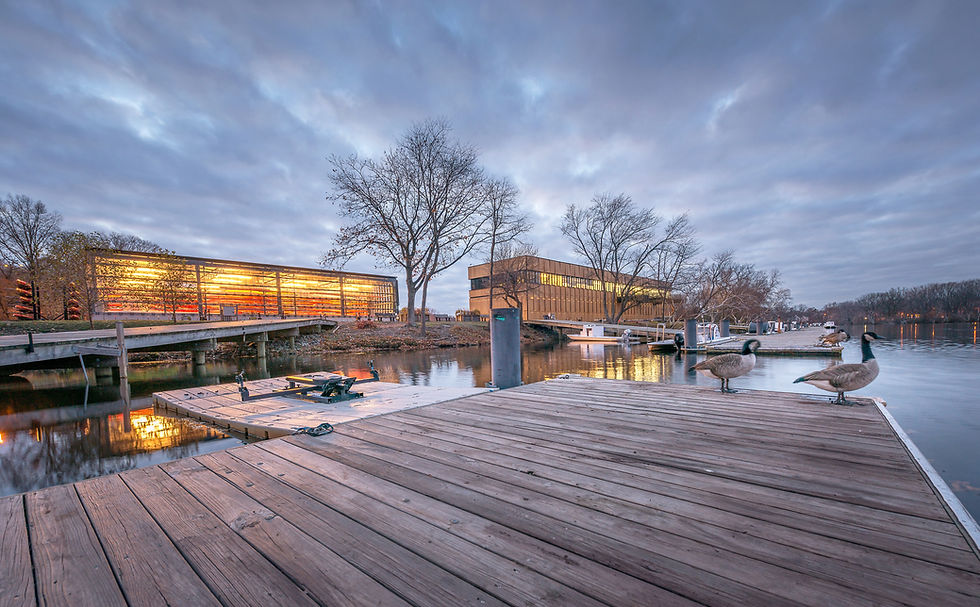
COMMUNITY ROWING BOATHOUSE
This new boathouse for Community Rowing, Inc. (CRI) provides a home for the largest public rowing organization in the country and supports more than half the rowers on the Charles River. Its mission includes providing public access to the river and developing accessible rowing programs, such as pioneering programs for Boston Public middle school students and adaptive rowing for the physically disabled.
CRI had never occupied a permanent home and wanted a building that would express its ethos of openness and accessibility. AW designed a facility that establishes a contemporary bookend to the area’s collection of historic boathouses, anchored in an ideal location, where the river, an urban park system, bike paths, and local roads converge. Composed of two buildings that form a common space between them, it creates a gateway to the river and a staging terrace for the boats: an open invitation to the Charles River and to CRI.
PROJECT LOCATION
Boston, MA
PROJECT SIZE
35,000 SF
PROJECT TYPE
Education, Civic/Cultural, Urban Design, Recreation, Waterfront
CLIENT
Community Rowing, Inc. (CRI)

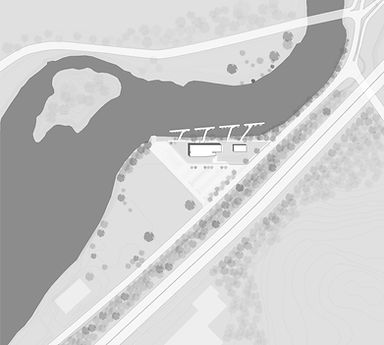
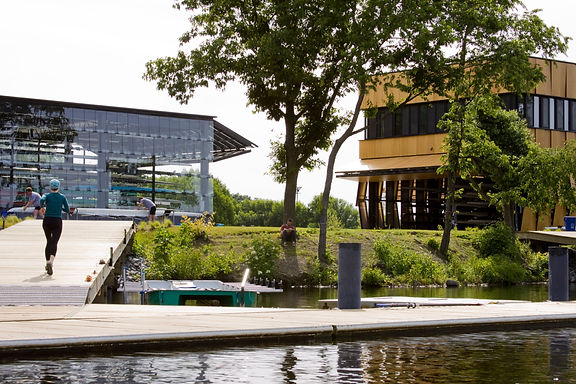

Both buildings in this project utilize innovative, dynamic building skins that completely protect the boats yet open and close easily by hand, introducing daylight and natural ventilation. The smaller of the two buildings is a pavilion for single shells, sheathed in glass shingles that both protect and display the boats within. The main building holds larger shells, offices, and coaching and weight rooms. It is clad with composite panels of phenolic resin and wood veneer that operate as louvers, naturally ventilating the boat storage and providing both functionality and energy efficiency. The system is iconic of New England’s traditional covered bridges and tobacco barns, reflecting their proportions and cladding.
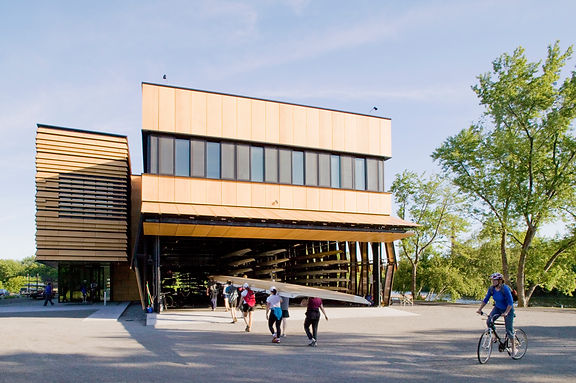
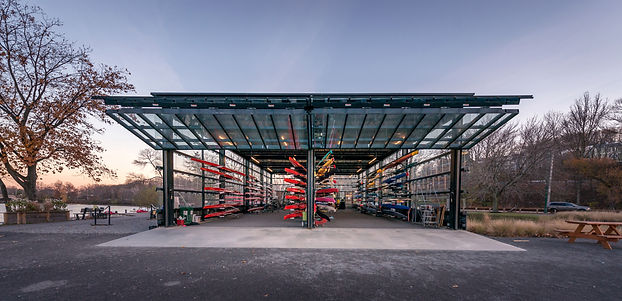

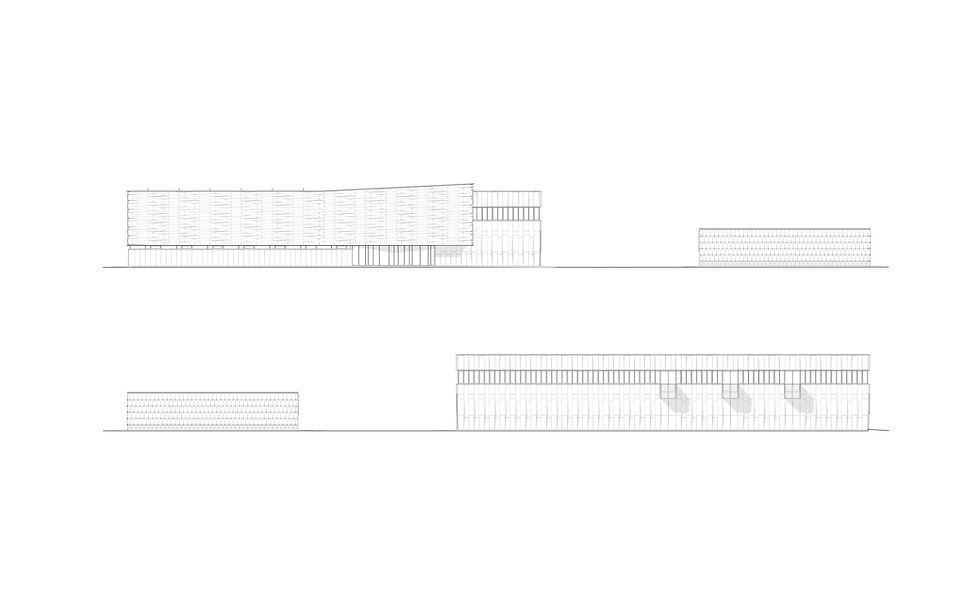



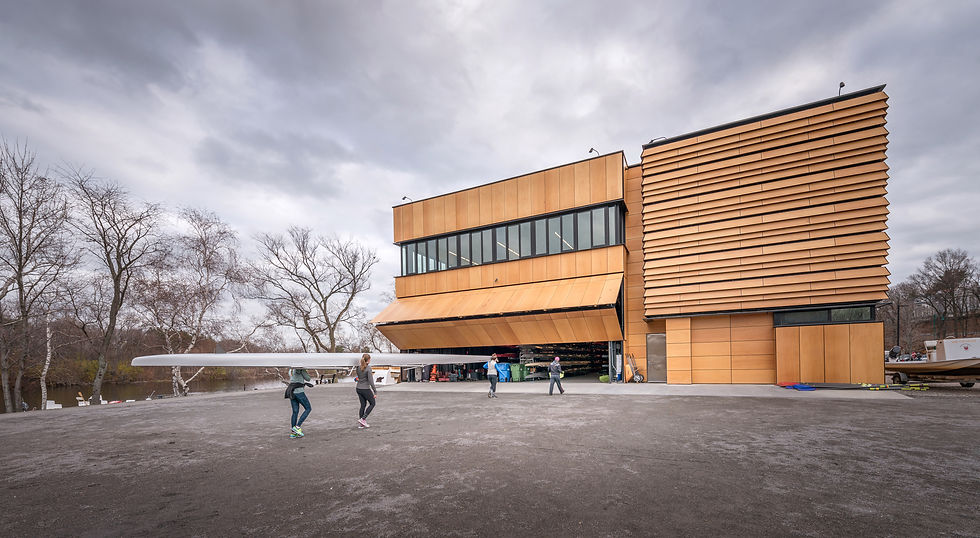

The experiential effects of these different types of cladding transcend their functional purposes. The main boathouse’s dynamic building envelope literally alters the shape of the building and its relationship to the surrounding landscape. Surfaces transform with the sun’s movement and with users’ movement around the building, not unlike a rowing shell’s rhythmic punctuations in the fluid medium of the river.


PROJECT COLLABORATORS
LANDSCAPE ARCHITECT
Stantec
STRUCTURAL ENGINEER
RSE Associates, Inc.
MARINE STRUCTURAL ENGINEER
Childs Engineering Corp.
MEP / FP
R.W. Sullivan Engineering
CIVIL / GEOTECHNICAL ENGINEER
Waterman Design Associates, Inc.
LIGHTING CONSULTANT
LAM Partners
CODE CONSULTANT
Kevin Hastings
CONSTRUCTION
Consigli Construction Co., Inc.
PHOTOGRAPHY
Jane Messinger
Peter Vanderwarker
Pygmalion Karatzas
VIDEO
Julian Tryba
